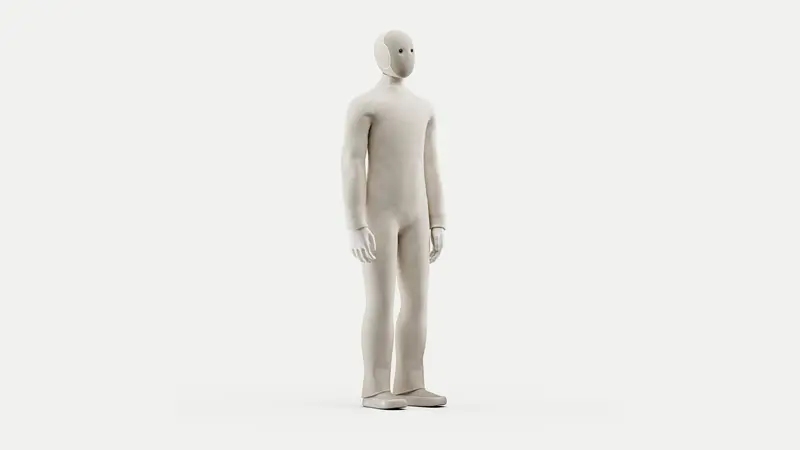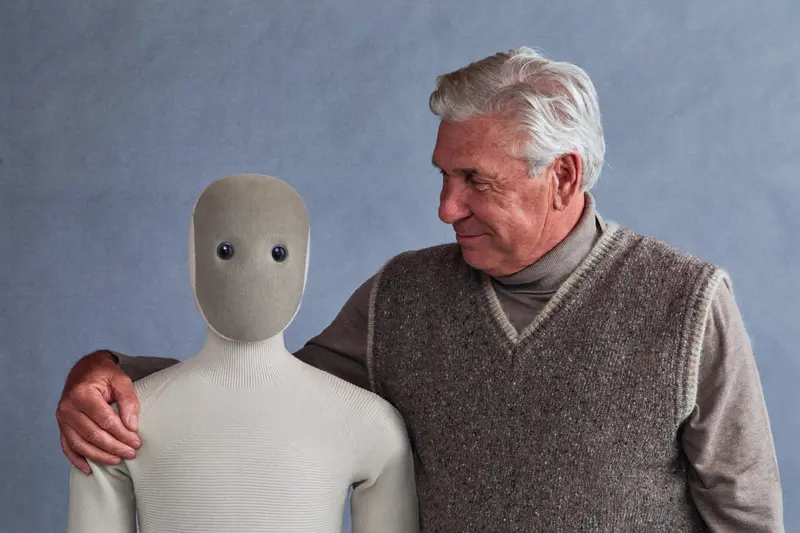- Published on
1X Details NEO's 'Human-in-the-Loop' Strategy and Hardware as $20,000 Pre-Orders Go Live

Following its major product reveal, robotics firm 1X is offering more clarity on the strategy and technology behind its NEO humanoid robot, which is now available for pre-order.
As previously reported, the company is pivoting from research to a commercial product, offering NEO for a $20,000 one-time purchase or a $499 monthly subscription, with US deliveries set for 2026.
While the launch frames NEO as a "humanoid companion" capable of "autonomous chores", new details from the company and third-party interviews confirm the central role that human-in-the-loop teleoperation will play, especially in the early stages.
The 'Expert Mode' and the 'Social Contract'
The launch confirms a "human-in-the-loop" training model, commercially branded as "Expert Mode". This system allows a human operator from 1X to "supervise" and pilot the robot through tasks it hasn't yet learned to perform autonomously.
I didn't see Neo do anything autonomously
1X has been open about this approach. In an interview with the Wall Street Journal, the company was "very clear" about the teleoperation aspect. In fact, during that demonstration, the reporter Joanna Stern noted they "didn't see Neo do anything autonomously"; every action was guided by a skilled human pilot, Turing, who has been seen in previous videos.
This teleoperation is the core of the AI training strategy. The videos captured while humans pilot the robot are used as training data to make the AI neural network smarter.
Eric Jang of 1X described the system as "autonomous + call for human assistance when NEO can't do a task, like how Waymo is operated & supervised."
This approach requires buy-in from early adopters. 1X CEO Bernt Børnich has referred to this as a "social contract": for the product to become useful, users must be "okay with" sharing data from their homes. The company frames this as a "big sister principle" (being helpful) rather than a "big brother" (being monitored).

To address privacy concerns, 1X states that tele-operators will not be able to see people (who can be blurred out), will be blocked by software from entering "no-go zones" set by the user, and can never connect to a robot without explicit user approval.
Impressive Specs Enabled by Novel Hardware
Beyond the AI strategy, newly released specifications reveal the unique engineering behind NEO. The robot stands 5'6" tall but weighs only 66 pounds. Despite this low weight, it boasts a 154-pound lift capacity and a 55-pound carrying capacity.
This combination of low weight and high strength is achieved by avoiding the heavy, rigid harmonic drives common in robotics. Instead, NEO uses a "tendon-driven body", loosely inspired by biological muscles. This architecture is key to its lightweight, safe design and its extremely quiet operation, with a maximum noise level of just 22 dB.
The 66-pound weight is a deliberate safety feature, intended to minimize risk if the robot falls. The robot's "sweater" is layered and also functional, acting as a "soft body" made from a "3D Lattice Polymer" mesh, which serves as a safer, non-creepy "skin".
Other key specs include:
- Hands: 22 degrees-of-freedom (DoF), described as "human-level dexterity"
- Battery: 4 hours of life with fast charging
- Compute: 1X Cortex, based on the NVIDIA Jetson Thor platform
- Vision: 2x 8MP fisyeye cameras
- Audio: 4-microphone array and 3 speakers
Managing Expectations: 'Robotic Slop' and the 'Data Flywheel'
1X leadership is managing expectations for the 2026 release. Jang called it a "product that is early for its time," admitting, "Some features are still in active development & polish. There will be mistakes."
While the company states NEO will perform "most" tasks autonomously by 2026, it clarifies that the quality of that work will vary and improve with data. This concept has been described as "robotic slop"—the idea that an imperfectly folded shirt is still useful, even if an arm is "kinda hanging out".
This is where the "data flywheel" comes in. As more users enable data sharing, the AI's capability, safety, and even "EQ" (Emotional Quotient) are expected to improve, leading to greater autonomy over time.
For now, users will interact with two main systems: the "Chores feature" (the Waymo-like supervised autonomy) and a "Fully Autonomous mode," which acts as an embodied AI assistant using the onboard "Redwood model" to attempt "best effort autonomy."
As 1X transitions from an R&D firm to a commercial entity, it is betting that $20,000 is a price consumers are willing to pay to be part of the journey. And it remains to be seen if they can achieve real usability at all.
Share this article
Stay Ahead in Humanoid Robotics
Get the latest developments, breakthroughs, and insights in humanoid robotics — delivered straight to your inbox.